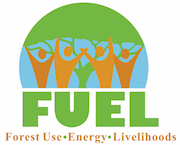Rwanda Inyenyeri Cookstove and Fuel Pellet Impact Evaluation
Fieldwork by: The University of North Carolina (UNC) team: Sudhanshu Handa (principal investigator), Pam Jagger, Karin Yeatts, Leena Nylander-French, Joe Pedit, and Valerie Flax (co-investigators). PhD candidates at the time: Ipsita Das and Ashley Bittner, also participated in the process along with several UNC students.
Location: Gisenyi, Rwanda
Sample: 1462 households
Timeline: 2014-2019
Target group: primary cooks and children
Research papers:
Early Adoption of an Improved Household Energy System in Urban Rwanda
Implementation and Scale-up of a Biomass Pellet and Improved Cookstove Enterprise in Rwanda
In progress: overall paper

Policy Issue
Household air pollution (HAP) and ambient particulate matter (PM) are two of the world’s most important contributors to the global disease burden. Despite the health and welfare consequences of HAP, there are surprisingly few initiatives that present real opportunities for large-scale adoption of clean cooking technologies with the potential for reducing emissions to levels that will improve health. To overcome this challenge, we research a for-profit renewable energy company in Rwanda that sells cooking energy in the form of fuel pellets and leases clean cookstoves to customers to see if this market-based strategy impacts adoption and use of clean cookstoves.
Details of Intervention
Partnering with Laterite Africa for data collection and the for-profit Inyenyeri, researchers conducted a randomized control trial examining the drivers of adoption for clean cookstoves and use of fuel pellets and how marketing from a private sector firm can impact adoption. Households signed an annual contract to purchase sustainably produced biomass pellets and lease a fan micro-gasification cookstove with fewer emissions. The different interventions that took place were: (1) marketing using billboards and radio programs with core messages such as “cook fast”, “stay clean”, “life made easy”, and “always the cheapest fuel”; (2) village-level cooking demonstrations; and (3) door-to-door visits from Customer Service Representatives (CSRs) to explain the contract model and conduct in-home cooking demonstrations. Researchers also investigated the role of the environment as a determinant of HAP-related health symptoms for children and adults.
Researchers observed that 81.9% of households indicated that they had heard of Inyenyeri. The majority of households had seen Inyenyeri billboards (83%), learned about the firm from friends (81.4%), and had been visited by a customer service representative (72.7%). A smaller percentage attended village cooking demonstrations (49.2%), and/or heard an Inyenyeri radio program (22.9%). Adoption (households that signed contracts with the firm) was 29.9% at the midline data collection. Contract-signing households generally had two improved cookstoves (i.e., opted to sign up for the firm’s mid-range pellet package). To find out if a household’s adoption of the household energy system made a partial or total switch to using pellets and the fan micro-gasification stove, researchers collected detailed information on the share of meals cooked during the past 30 days on various technologies. They found that households that adopted the Inyenyeri system appeared to be replacing cooking on both portable and fixed charcoal stoves with the biomass pellet and fan micro-gasification stove combination. Households were also found to be stove stacking, a process of using both traditional and improved cookstoves.
During baseline data collection, household demographics, the health of children and primary cooks, time use and preferences, and household expenditure were collected among other sociodemographic questions. To measure exposure to airborne contaminants, the primary cook wore a carbon monoxide (CO) exposure monitor for a 24 hr period from 1,150 households. To understand the impacts of HAP on children, 24 hr and hourly averages of CO data collected across these houses with children under 5 years old were aggregated and mothers were asked if their children had any of the following HAP related symptoms within two weeks prior to the survey: respiratory infection, illness with cough, difficulty breathing and dry eyes. They found a strong positive association between a group of multiple enclosed dwellings, relative to a single house, and under-five children’s HAP-related symptoms.
Policy Discussion
Our findings suggest that in addition to promoting increased access to clean cooking technologies, there are important infrastructure and microenvironment-related interventions that mitigate household air pollution (HAP) exposure. Policymakers should consider infrastructure-related interventions to reduce HAP exposure, along with promoting improved access to modern household energy services.
Cooking with solid fuels has consequences for the environment, health, and overall well-being. Adoption rates for improved and clean cookstoves are overall low, however, this may be attributed to lack of information distribution on the linkages of environment and climate compared to health. Policymakers can improve this by targeting groups for future interventions and messaging of improved cookstove programs.
To address barriers to the adoption of cleaner cooking technologies, correcting consumers’ use of the stove mediates the user experience. The cost of cleaner cooking technologies was reported as a facilitator among some adopters and a barrier among other adopters and non-adopters. Researchers also found that peer influence played a significant role as both a barrier and a facilitator to adoption and transcended other factors. To overcome barriers to cleaner cooking adoption, programs should prioritize affordability, peer network communication, and training on how to use new technologies.








